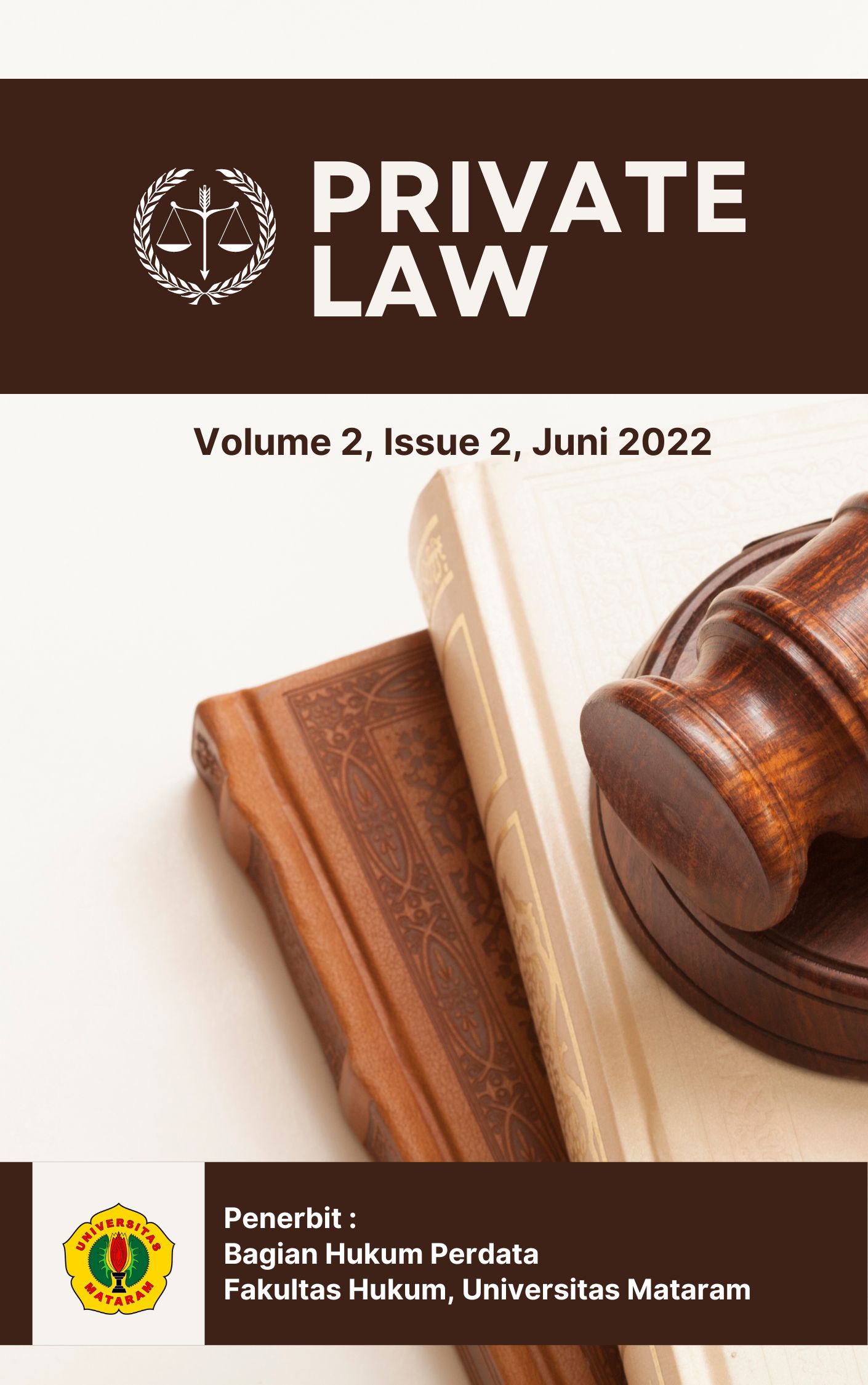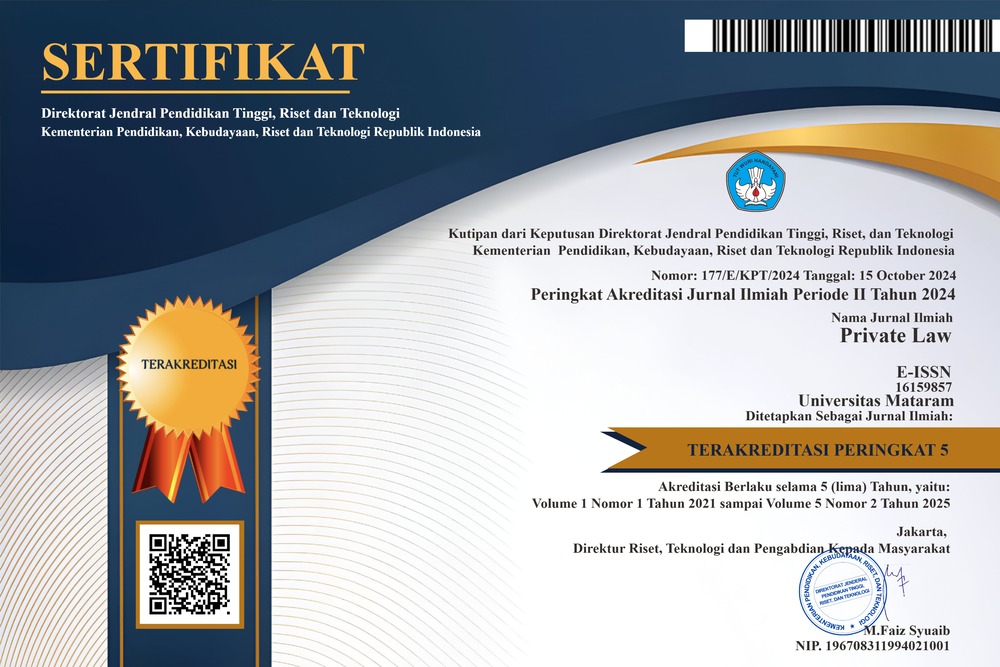Analisis Yuridis Putusan Pengadilan Agama Tingkat Pertama Terhadap Perkara Cerai Talak dan Akibat Hukumnya
Studi Putusan Nomor 0668/Pdt.G/2020/PA.Bima
DOI:
https://doi.org/10.29303/prlw.v2i2.1121Keywords:
Anlisis Yuridis, Putusan Hakim, Cerai TalakAbstract
The title of this research is Juridical Analysis of First Decree of Islamic Court Decisions on Divorce Cases and Its Legal Consequences (Study on the Verdict Number 0668/Pdt.G/2020/Pa.Bima). The purpose of this study was to determine the legal consequences of divorce and the judge's legal considerations in accordance with the positive law that applies in determining the Decision of the Islamic Court Number 0668/Pdt.G/20/PA.Bm. This research was expected to provide benefits for the development of legal knowledge regarding the legal consequences of divorce and legal considerations of judges in accordance with generally accepted positive law. The method used in this research is normative research. The sources of legal materials in this study were literatures study and the decision of the Bima Islamic Court Verdict Number 0668/Pdt.P/20/PA.Bm. The types of legal materials used in this research were primary, secondary and tertiary data in the form of the Bima Islamic Court decision from the Verdict Number 0668/Pdt.P/20/PA.Bm and secondary data in the form of books, scientific works, and others. The technique of collecting legal materials was literature study. The method of analyzing legal materials in this research was descriptive qualitative analysis method. The results of this study stated that the legal consequences of divorce based on the Verdict of the Islamic Court Number 0668/Pdt.G/20/PA.Bm, namely the termination of the marital relationship due to the decision of the religious court, so that there is no longer a husband and wife relationship between the two parties. The existence of the provision of a living from the Petitioner to the Respondent by obtaining “iddah†and “mut'ah†living. Then, judging from the positive legal process in the Court Decision process, both of them are in accordance with the applicable law.












